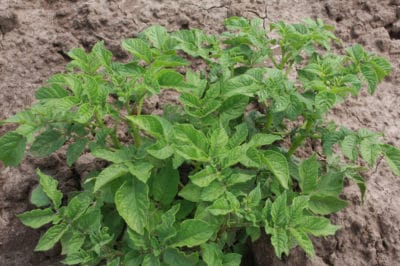Potato Basics
Potatoes are a cool-season crop. However, maturity length can vary from 75 to 120 days, so the amount of sun the potato patch gets can be different over that period of time. In addition, gardeners in desert areas must usually grow potatoes in winter, when the sun is at its lowest. The absolute minimum amount of sunlight for potatoes is six hours per day.
Potato Requirements
To grow good potatoes, you should ensure the following:
- Fertile, rich soil that is loose and friable, with a pH between 5.5 and 6.0
- Adequate water throughout the growing season; stop watering once tops die down.
- Soil that is well-drained; soggy soil increases the chance of rot.
Spring and Fall
While winter days are shortest, spring and fall have roughly equivalent amounts of sun over the growing period. However, the timing is distinctly different – in spring, daylight length increases while in fall it diminishes. It’s important to time fall plantings so the potatoes are past the point of vegetative growth once the days really begin to get short.
Summer Sunlight
The amount of sun in summer is rarely an issue in growing potatoes unless you garden where shade from tall trees falls on the garden area. A bigger issue in summer may be heat. Potatoes do best when surrounding temperatures stay between 65 and 70 °F (18 and 21°C). If you must grow potatoes in summer heat, try to provide them with some afternoon shade.
Latitude and Sunlight
Northern areas typically have much longer days in summer, so potatoes should get plenty of sun. They also often have the cool temperatures potatoes need. However, they have shorter growing seasons. The amount of sunlight for your potatoes may be less of an issue than that need to harvest them before the ground freezes again in a place like Alaska.
Sunlight and Solanine
While the plant needs sun to grow, tubers exposed to light turn green and become inedible. The light fosters the development of solanine, a toxic substance common in the nightshade family to which potatoes belong. Hill your potatoes at least twice while growing by covering them with soil or mulch to prevent greening an solanine development.
Stored Potatoes
Stored potatoes must be protected from light, whether sunlight or normal indoor lighting. Just as with potatoes in the field, stored potatoes will become green and inedible if exposed to light. Once they have completed dormancy, light will also increase the risk that stored potatoes will begin to sprout. Store your potatoes in a cold, dark area with high humidity.
